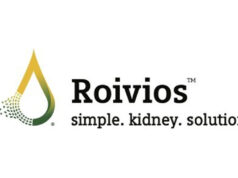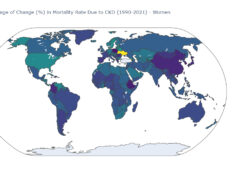 A new proteomic risk model for cardiovascular disease in chronic kidney disease (CKD) patients has been found to be more accurate than current methods of measuring cardiac risk, according to a new study led by researchers in the Perelman School of Medicine at the University of Pennsylvania (Penn; Philadelphia, USA). The study is published in the European Heart Journal.
A new proteomic risk model for cardiovascular disease in chronic kidney disease (CKD) patients has been found to be more accurate than current methods of measuring cardiac risk, according to a new study led by researchers in the Perelman School of Medicine at the University of Pennsylvania (Penn; Philadelphia, USA). The study is published in the European Heart Journal.
The Penn researchers developed a model using proteomics, studying proteins as biomarkers. The researchers studied nearly 5,000 proteins in 2,667 participants with CKD from the Chronic Renal Insufficiency Cohort (CRIC) and the Atherosclerosis Risk in Communities (ARIC) cohort. All participants had CKD and no history of cardiovascular disease at study baseline.
The team, from Penn, Johns Hopkins, and the University of California San Francisco, used a drop of blood from participants to predict a patient’s risk for a cardiac event. With the model, they evaluated 4,628 unique proteins to find which could most closely help identify risk of cardiovascular disease. Of those thousands of proteins evaluated, researchers used machine learning methods to choose 32 proteins that comprised their proteomic risk model. Those specific proteins were determined to best help indicate a patient’s risk level of heart attack, heart failure, stroke, or even cardiovascular death in those with CKD.
“The future is bright. In an era of personalized medicine, these findings indicate a new route for future research into therapeutic targets,” said Rajat Deo, an associate professor of cardiovascular medicine at Penn Medicine. “The ability to personalise risk assessment for individual patients with CKD is the first step toward scaling this for larger health systems.”
This new model was found to be more accurate in identifying those at risk of future cardiovascular disease, as compared to both the 2013 ACC/AHA Pooled Cohort Equation (PCE)—which provides a set of guidelines for best practices in measuring cardiovascular risk—and a modified PCE that included estimated glomerular filtrate rate (eGFR).
Those in the highest measure of predicted risk had an observed incident cardiovascular event rate of 60% over 10 years. The reliable identification of such high-risk individuals with no prior history of cardiovascular disease, a Penn press release states, “will undoubtedly be of great interest to patients and their providers for preventative care measures”.
Not only did the study indicate this model was more accurate compared to current approaches, the researchers were able to identify several proteins, like cartilage intermediate layer protein 2 (CILP2), that can be used in future research to identify cardiac risk or be the target for novel therapies.
All data connected to this study will be publicly available. “We’re laying it all out for researchers around the world to be able to access and make further strides in this field,” said Deo.












